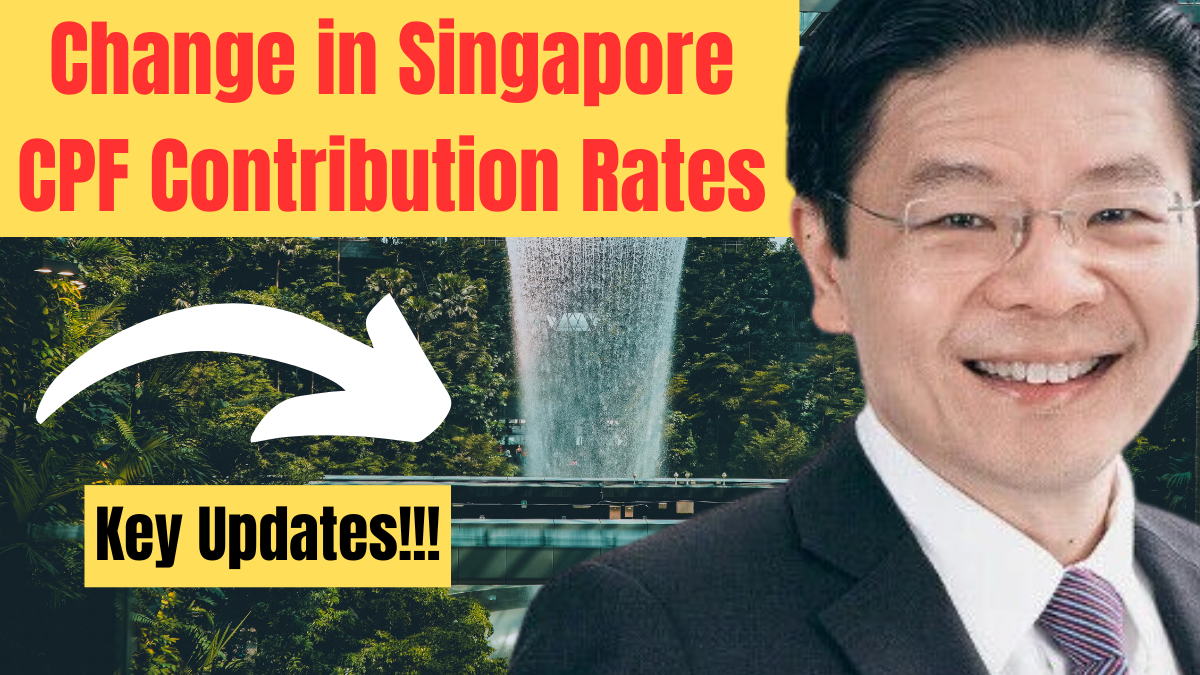The Central Provident Fund (CPF) is a crucial part of Singapore’s social security system, supporting citizens in retirement, healthcare, and housing. In 2025, CPF contribution rates will undergo significant changes, particularly for employees aged 55 to 70. These adjustments align with the government’s strategy to enhance retirement adequacy and ensure long-term financial security.
For employees, this means higher retirement savings but potential changes in take-home pay. For employers, it translates to increased labor costs and the need for payroll adjustments.

Overview of CPF Contribution Rate Changes in 2025
The CPF contribution rate revision focuses on boosting savings for older workers while ensuring that higher-income earners contribute more towards their CPF accounts.
| Feature | Details |
|---|---|
| Affected Groups | Employees aged 55 to 70 |
| Increase in Contributions | Higher CPF rates for senior workers |
| CPF Monthly Salary Ceiling | Raised to require greater contributions from high-income earners |
| Impact on Employees | Increased retirement savings, potential lower take-home pay |
| Impact on Employers | Higher labor costs, need for payroll system updates |
| Official Website | CPF Board Singapore |
New CPF Contribution Rates for 2025
The CPF contribution rates will increase only for employees aged 55 to 70, as part of a gradual enhancement plan to help senior workers accumulate more savings.
- Employees aged 55 and below – No change in CPF contribution rates.
- Employees aged 55 to 70 – Higher CPF contribution rates phased in, ensuring better retirement and healthcare savings.
- CPF Monthly Salary Ceiling Adjustments – Higher earners will contribute more to CPF.
Impact on Employees
The CPF adjustments will result in higher savings for retirement but may also lead to slightly reduced take-home pay due to increased CPF deductions.
Key Benefits & Considerations
- Increased Retirement Savings – Additional contributions will enhance the Ordinary Account (OA), Medisave Account (MA), and Special Account (SA) balances.
- Potential Take-Home Pay Reduction – Employees might notice a slight decrease in net income due to higher CPF deductions.
- Greater Financial Stability – The revised rates ensure stronger financial security in retirement.
Impact on Employers
Employers must adjust their payroll expenses to account for higher CPF contributions for senior employees. This may lead to increased employment costs, particularly for businesses with a significant number of older workers.
Key Challenges for Employers
- Higher Payroll Costs – Businesses must budget for increased CPF contributions.
- Regulatory Compliance – Payroll systems and HR policies must be updated to reflect new CPF rates.
- Strain on SMEs – Small and medium enterprises (SMEs) may face financial challenges in absorbing these costs.
CPF Monthly Salary Ceiling Adjustments
The CPF monthly salary ceiling refers to the maximum wage subject to CPF contributions. In 2025, this ceiling will increase, requiring higher-income earners to contribute more to CPF.
Key Changes & Effects
- Higher CPF Contributions for High Earners – Employees earning above the previous salary ceiling will have a greater portion of their income deducted for CPF.
- Enhanced Retirement Funds – The increased ceiling ensures higher retirement savings for top earners.
MUST READ
- ₱2200 SSS Pension 2025 – Check Eligibility, Payment Schedule, and Updates
- South Africa Salary Increase 2025 – Public Sector Wage Hike and New Salary Adjustments
- Social Security Confirms New RSDI Payments for March 2025 – Updated Payment Schedule
How to Prepare for CPF Rate Changes
Both employees and employers should take proactive steps to adapt to the CPF contribution rate revisions.
For Employees
- Review personal finances – Adjust budgeting plans for potential changes in take-home pay.
- Consider additional savings – Supplement CPF contributions with private savings or investments.
- Stay informed – Regularly check CPF Board updates for policy changes.
For Employers
- Update payroll systems – Ensure HR and payroll software reflect the new CPF contribution rates.
- Adjust budget plans – Account for higher employment costs.
- Educate employees – Provide financial planning resources to help employees understand CPF changes.
Final Thoughts
The CPF contribution rate adjustments in 2025 are a significant step towards strengthening retirement security for older employees. While this means higher savings, it also brings challenges such as potential reductions in take-home pay and increased employer costs.
By understanding these updates, employees can better plan their finances, and employers can prepare for payroll adjustments, ensuring a smooth transition to the revised CPF structure.
For more information, visit the official CPF Board website.
FAQs
Who is affected by the CPF contribution rate changes in 2025?
Employees aged 55 to 70 will see an increase in CPF contribution rates, while employees aged 55 and below will experience no changes.
Will my take-home pay decrease due to CPF changes?
Yes, employees affected by the CPF increase may experience a slight reduction in net salary, as a higher portion of income is allocated to CPF.
How does the CPF salary ceiling change affect me?
The CPF monthly salary ceiling will increase, meaning high-income earners will contribute more to CPF, leading to higher retirement savings.
Do employers need to update their payroll systems?
Yes, employers must adjust payroll systems and HR policies to comply with the new CPF contribution rates for affected employees.
How can employees prepare for CPF changes?
Employees should review their financial plans, consider additional savings, and stay updated with CPF announcements.
What should SMEs do to manage increased CPF costs?
SMEs should budget for increased labor expenses, explore productivity enhancements, and assess workforce strategies to offset costs.
Click here to know more.
Aanchal is a passionate writer with a keen interest in storytelling, content creation, and creative expression. She enjoys exploring diverse topics and crafting engaging narratives that captivate readers.